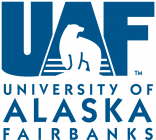Indigenous Observation Network 2.0: Impacts of Environmental Change on the Yukon and Kuskokwim Watersheds
Part 1: This continuation of the Indigenous Observing Network (ION) project (now ION 2.0) will be led by the Yukon River Intertribal Watershed Council (YRITWC) in partnership with the University of Alaska-Fairbanks. ION 2.0 will continue measurement of water quality constituents and expand the observation and monitoring program to include measurements of changes in permafrost depth due to thawing of the active layer at numerous of the long-term water quality monitoring sites. The ION project has documented the long-term changes in major ion chemistry that have occurred over three decades throughout the Yukon River Watershed. The investigators have interpreted these changes as being driven by thawing of discontinuous permafrost throughout this large Arctic watershed and complementary measurements of the active layer will support further interpretation and modeling. This project involves significant co-production of knowledge with members of Indigenous communities and capacity building through training in sampling methods, and sample and data analysis.
Part 2: This project will continue the long-term water quality monitoring at many sites in the Yukon River Watershed that have been conducted by the Indigenous Observing Network (ION) project. The ION 2.0 project will be led by the Yukon River Intertribal Watershed Council (YRITWC) in partnership with the University of Alaska-Fairbanks. ION 2.0 will expand the observation and monitoring program to include measurements of changes in permafrost depth at numerous of the long-term water quality monitoring sites. These changes occur due to thawing of the active layer driven by the changing Arctic climate. The ION project has shown that changes in major ion chemistry have occurred over three decades throughout the Yukon River Watershed due to the thawing of discontinuous permafrost. The investigators have interpreted the complementary measurements of the active layer will support further interpretation and modeling. This project involves significant co-production of knowledge with members of Indigenous communities and capacity building through training in sampling methods, and sample and data analysis.



